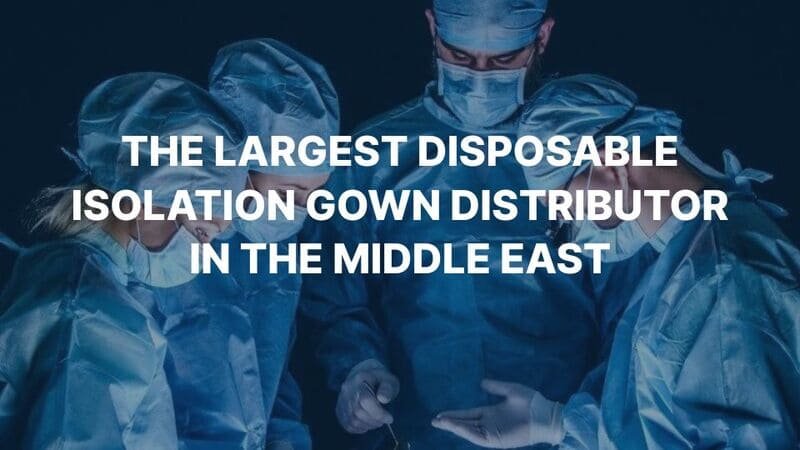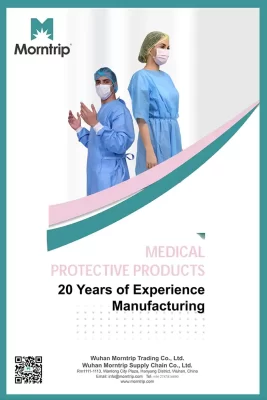Table of Contents
Disposable medical coveralls contribute to the safety of both health workers and patients within high-risk environments. It is estimated that the protective garment market worldwide will keep growing to reach $2.51 billion by the year 2030; however, their importance in infection control and compliance with standards of safety has never been more apparent. This article will explore the growing demand for disposable medical coveralls, their material composition, regulatory compliance, and key purchasing considerations, hence acting as a guide for industry professionals navigating this dynamic market.
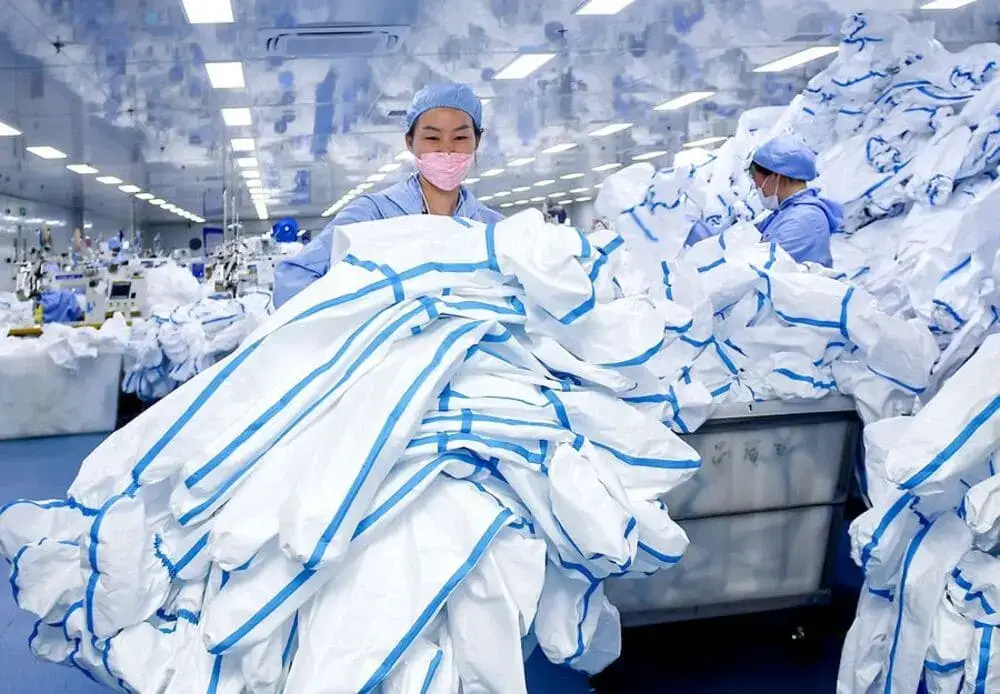
Disposable Medical Coveralls Market Growth & Demand
The global market for disposable medical coveralls was valued at approximately USD 1.42 billion in 2022 and is projected to grow at a CAGR of 7.4% from 2023 to 2030, reaching an estimated USD 2.51 billion by 2030(Grand View Research). This growth is driven by various factors, including rising health awareness, increased healthcare needs, and the ongoing threat of infectious diseases:
Health Crises and Emerging Diseases
COVID-19 increased demand on a large scale for disposable medical coveralls, which have been in use by healthcare workers at the forefront, requiring better protection against viral infections. The continuous possibility of other diseases like Ebola and new flu variants supports the demand increasing for such garments.
Health Awareness and Safety Standards
The heightened awareness of personal protection due to the COVID-19 pandemic, which significantly increased the use of personal protective equipment (PPE) across healthcare settings(Research Dive). Stricter safety regulations, including those from agencies like OSHA, have significantly boosted the demand for disposable protective clothing.
Rapidly Developing Healthcare Infrastructures
In Asia-Pacific, Latin America, and Africa, as more investment into healthcare is made, disposable medical coveralls are increasingly used as part of infection control protocols to ensure the safety of healthcare workers and patients.
Government and Regulatory Support
Many governments have relaxed import-export restrictions to ensure a steady supply of PPE. Some countries are focusing on local manufacturing to reduce dependence on imports, further boosting the availability and use of disposable medical coveralls.
Industrial Applications
Wider usage in industries like food service, pharmaceuticals, and manufacturing, expand the disposable medical coveralls market scope beyond healthcare.
The ongoing trends suggest that the disposable medical coveralls market will continue to expand, with healthcare and industrial sectors being the major contributors to this growth.

Types of Materials Used in Disposable Medical Coveralls
Disposable medical coveralls are made from various materials, each offering different levels of protection depending on the environment and risks involved. Below are the most common materials used:
Material Composition of Disposable Medical Coveralls

Polypropylene (PP)
Polypropylene (PP) is the most widely used material for disposable coveralls. It is lightweight, breathable, and cost-effective, offering excellent resistance to both water and chemicals. PP coveralls are great for everyday use when you need basic protection.
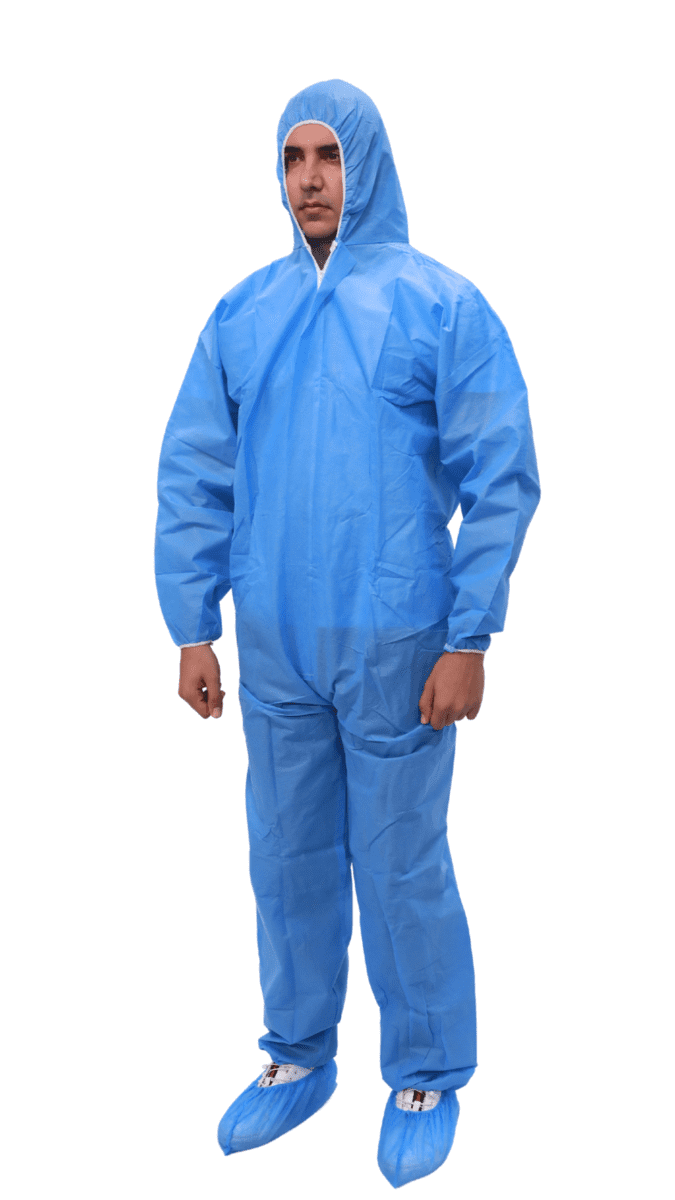
SMS (Spunbond-Meltblown-Spunbond)
SMS coveralls are different from PP coveralls. They have multiple layers of fabric that work together to block dust and liquids while still allowing air to pass through. This design provides a high level of filtration while maintaining breathability and comfort. SMS coveralls are used in environments that require both particulate and fluid resistance.

Microporous Fabric
Microporous fabric is designed with a microporous film laminated onto a non-woven fabric, it provides excellent protection against liquids and particulates while allowing moisture vapor to escape. Microporous coveralls are commonly used in industries like pharmaceuticals, agriculture, and hazardous material handling.
Design and Fit of Disposable Medical Coveralls
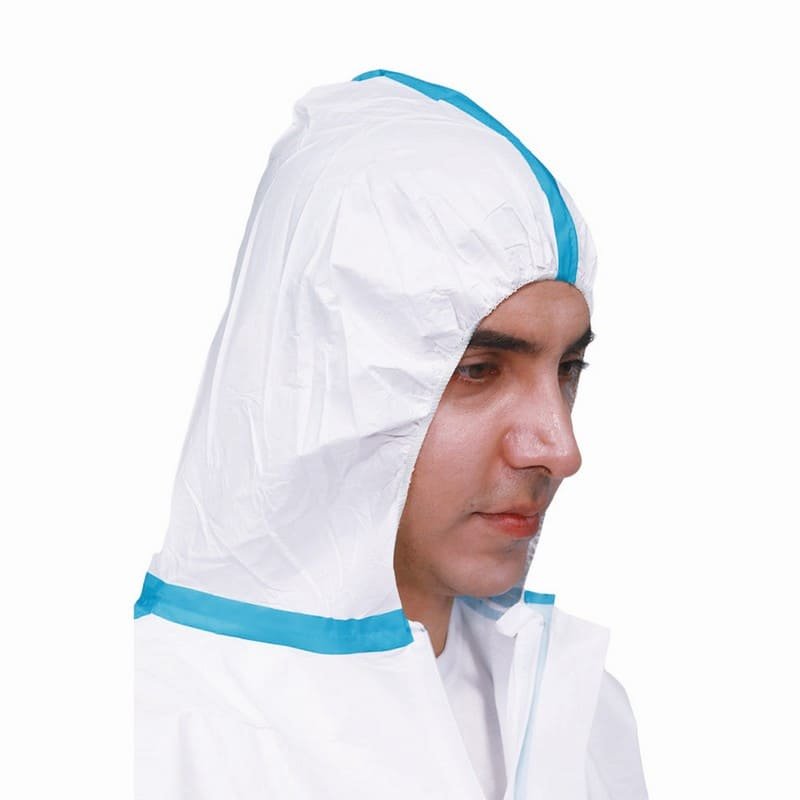
- Hood: Medical coveralls are designed with usually 3-panel hoods to be worn over the head, drawing on for a tight-to-face-and-neck fit so as to minimize exposure to contaminants.
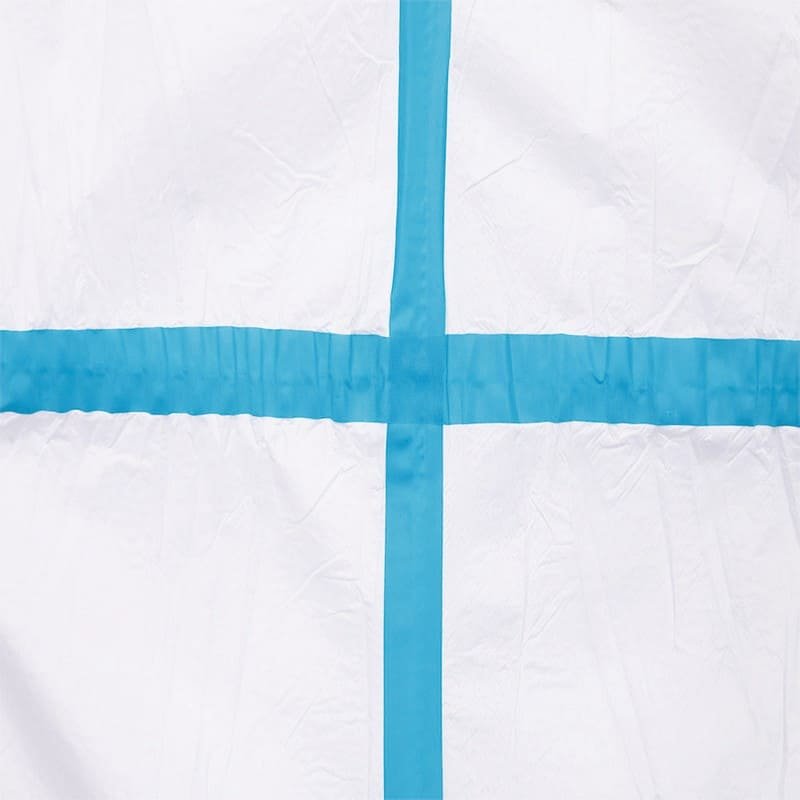
- Seams: The seam structures of medical coveralls are very strong, with features like welded seams or taped seams that enhance durability and prevent liquid penetration.
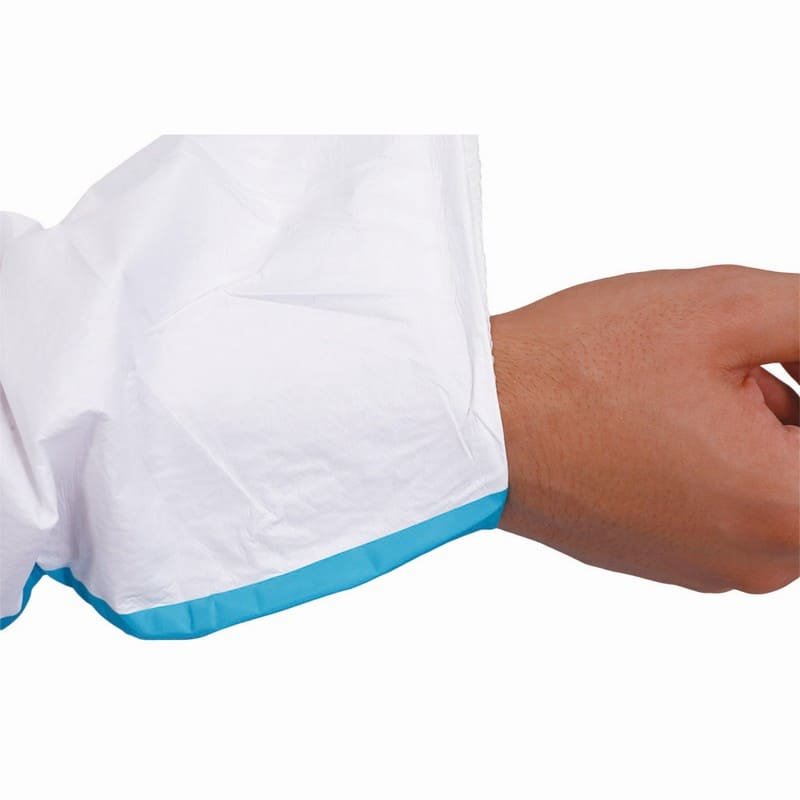
- Cuff and Ankle Design: Elastic cuffs and ankles are common design features contributing to a close-to-body fit in order to eliminate contaminant entry into the coverall.

- Zipper Closure: Most models have a high-quality zipper with a sealable storm flap that makes it easy to put on and take off the coverall while adding a barrier against contaminants.
- Loose Design for Mobility: Most of the medical overall designs have ultra-loose arm and leg regions that ensure mobility and comfort during wear. This is very important to medical staff who might be called upon to perform other tasks even while in their protective gear.

Regulatory Compliance of disposable medical coveralls
Disposable medical coveralls protect healthcare workers and must meet strict guidelines to provide the best safety. These rules focus on ensuring that coveralls effectively protect workers from various risks.
Compliance in the U.S.
In the U.S., the medical coveralls are divided depending on their usage:
- Non-Surgical Coveralls: These are of Class I medical devices; therefore, they can be sold without approval, but still have to be listed with the FDA.
- Surgical Coveralls: These involve more intricacies and hence relate to Class II. They get approved after pre-market notification along with testing and review of the FDA to verify whether they are safe and efficient.
Other coveralls should be certified to safety standards by the National Institute for Occupational Safety and Health(NIOSH) . The Occupational Safety and Health Administration(OSHA) also has rules requiring that the coveralls be resistant to synthetic blood and other viruses in accordance with standards ASTM F1670/F1671.
International Standards
On the international stage, disposable coveralls have to meet even more standards to ensure safety:
- EN ISO 13688: This European standard covers the general performance of protective clothing for comfort, safety, and effectiveness for the wearer.
- EN 14126: This standard provides additional requirements for protective coveralls designed to protect the wearer against hazardous agents in the form of viruses, bacteria, and liquids testing material resistance to biological hazards.
Common Types of Coveralls According to EN Standards
- Type 4: These coveralls protect against liquid chemicals and are safe to use in messy environments.
- Type 5: These coveralls are made for dusty environments and protect against dry, airborne particles.
- Type 6: These are lighter suits that protect against small liquid splashes but are not completely airtight.
Applications in Medical Settings
In pathogenic transmission, disposable medical coverall plays an important role. These one-time-wear garments eliminate the risks of cross-contamination from being washed together with other clothes and hence very crucial in the medical field.
Examples of Use in High-Risk Environments:
- Surgery: In surgical environments, disposable coveralls maintain sterility and are critical in preventing surgical site infections.
- Infectious Disease Wards: In areas where patients are infected with contagious diseases, these coveralls act as a barrier, preventing the spread of infection between patients and healthcare workers.
- ICU and Isolation Units: In intensive care and isolation units, where patients may have highly infectious diseases, disposable coveralls provide crucial protection to medical staff.
- Handling hazardous materials: In medical settings, disposable coveralls protect workers from hazardous materials such as chemicals, biological agents, and radioactive substances. This is particularly important in laboratories, pharmacies, and other areas where such materials are handled.
- COVID-19 and other pandemics: The demand for disposable medical coveralls increased significantly during the COVID-19 pandemic due to the heightened need for self-protection. They were very important in protecting the frontline health workers from the virus.
Key Purchasing Considerations of Disposable Medical Coveralls
Cost Benefits of Disposable Medical Coveralls
Disposable medical coveralls offer significant cost advantages, especially when purchased in bulk. Buying in large quantities can lower the unit price significantly.
Bulk Purchasing Advantages
- Cost Savings: Bulk buying leads to lower per-unit prices, maximizing budget efficiency.
- Reduced Packaging Costs: Ordering in larger quantities spreads the packaging fees over more units, significantly lowering the cost per coverall.
- Lower Shipping Costs: Fewer shipments are required for bulk orders, which reduces shipping fees.
Long-Term Efficiency and Risk Mitigation
- Increased Efficiency: Managing inventory is easier with bulk orders, reducing time spent on stock replenishment and minimizing risks of stockouts. This is especially critical during health crises like the COVID-19 pandemic, where demand for protective gear surges unexpectedly.
- Reduced Risk of Stockouts: Having a larger stock of disposable coveralls ensures healthcare facilities are always prepared, even in times of increased demand or supply chain disruptions.
Budget-Friendly Options for Long-Term Use
- Protecting Other PPE: Disposable coveralls save other, more expensive PPE from dirt, grease, and grime, adding to their longevity. They are actually cheaper to maintain than their reusable counterparts, even though they are for single use only, since cleaning and upkeep are not required.
- Affordable Maintenance: With a focus on bulk buying and savings over the long term, disposable medical coveralls present an economical and practical solution for industries that range from healthcare to pharmaceuticals.
By focusing on bulk purchasing and long-term savings, disposable medical coveralls offer an economical and practical solution for various industries, from healthcare to pharmaceuticals.
Disposable medical coveralls are indispensable in healthcare and other industries, offering reliable protection, compliance with stringent safety standards, and cost-effective solutions. This blog has highlighted their market growth, material types, regulatory requirements, and purchasing advantages. As demand continues to rise, ensuring a steady supply of high-quality coveralls is essential for safety and operational efficiency.
For premium disposable medical coveralls and other protective medical gowns, contact us today. Our expert team is ready to assist you in finding the best solutions tailored to your needs.

